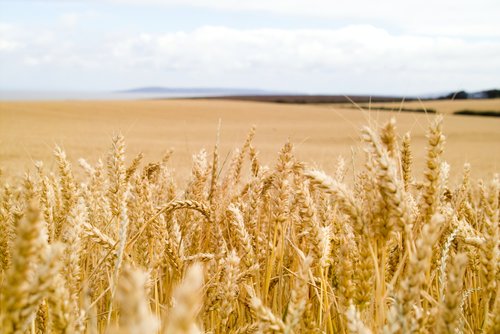Breeding Field-Ready Canada Western Red Spring Cultivars for the Eastern Prairies

Written by: Ian Doig
Santosh Kumar develops CWRS wheat varieties for the Agriculture and Agri-Food Canada (AAFC), Brandon Research and Development Centre. The Canadian National Wheat Cluster is a key funder of the breeding work he and his team conduct. Paired with internal AAFC funding that advances breeding technologies, the creation of new varieties can be done quickly, efficiently and cost effectively, said Kumar.
“Five-year cluster funding helps us make new breeding populations while taking the advanced breeding populations from previous clusters and finishing them as field-ready cultivars,” he added. “We continue to work from one cluster to another.”
The development of cultivars for the eastern Prairies is one of two CWRS projects Kumar leads. Its central objectives are to improve CWRS quality traits, increase potential for high yield and boost priority-one disease resistance. In this geographic area that stretches east from Saskatoon to Ontario’s extreme west, good soil and long growing degree days are ideal for high-yielding varieties. However, the area experiences a very high incidence of Fusarium, rusts and bunt diseases due to high moisture and warm weather conditions.
In this region, CWRS competes with soybean and corn for acreage. Kumar noted with increased global wheat demand over the last couple of years, CWRS acres have increased here.
To minimize the amount of straw CWRS varieties produce under warm, moist conditions, the team develops semi-dwarf varieties. These tend to channel nutrients into grain yield rather than plant material. Their high stem strength prevents lodging, a valuable physical asset against Prairie winds that can result in serious harvest difficulties and quality downgrades.
While these varieties deliver very high yield that ensures profitability, protein content must also align with the CWRS quality profile wheat buyers expect. “Its quality profile makes CWRS the king of wheat globally,” said Kumar. This includes high milling yield and gluten strength as well as adequate falling number, which Kumar described as paramount to good wheat grading results. The baking qualities of the dough must also be excellent.
The creation of a broad disease package adds challenge. “Because we are public breeders funded by farmers, we go beyond the five priority-one diseases,” said Kumar. Disease resistance additionally includes loose smut and leaf spot diseases.
The eastern Prairies region also has a high prevalence of orange blossom wheat midge, which can cause up to 15 per cent yield loss and grade loss due to kernels that are shrivelled and scratched. “We focus on that quite a bit in the eastern Prairies because it’s a problem in this area,” said Kumar. One of nine varieties developed since 2014, the breeding program’s latest is the midge tolerant AAC Hodge.
The list also includes AAC Cameron, AAC Jatharia, AAC LeRoy, AAC Magnet, AAC Prevail and AAC Warman. These nine varieties hold solid track records, having performed very well while climatic conditions have varied greatly. “That tells us the varieties are consistently making good quality wheat through drought years or high rainfall years,” said Kumar. “Farmers can expect the best package that we can build for them.”